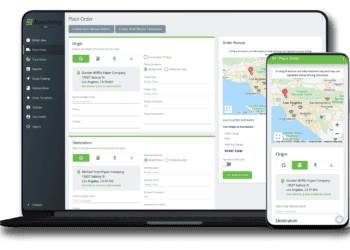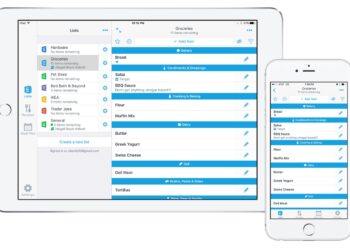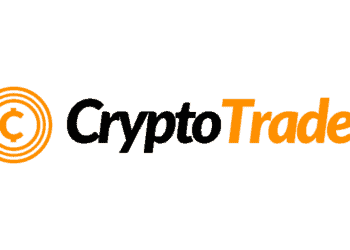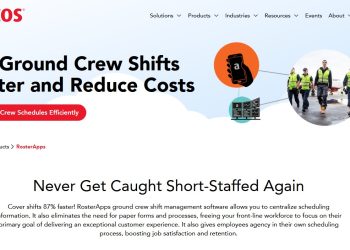The latest US Bureau of Labor Statistics inflation report shows the consumer price index (CPI) increased at a 4 percent annual rate in May this year, marking the lowest rate in over two years. A low CPI means low inflation, but while this can change anytime, economists need to discuss and prepare for every potential scenario as part of inflation prediction.
Quantum computing, a rising field of advanced computing, is poised to revolutionize our multifaceted technological landscape, including solutions for inflation prediction. This article discusses the developments and challenges that quantum computing introduces to inflation prediction and the transformative power of quantum algorithms.
We also look into the disruption of classical models as a result of the paradigm shift and the inevitable need to resolve the difficulties of the emerging quantum age.
Quantum Computing and Potential Disruptions
Inflation prediction has traditionally relied on econometric models and statistical analysis of historical information. Economists and researchers study various economic signals, like GDP growth, money supply, and unemployment rates, to forecast inflation.
Unfortunately, these models fail to meet the demands of the modern economy and the unanticipated circumstances affecting inflation. To fill the gap, experts may count on quantum computing.
Compared to traditional computing, quantum computing is radically unique in its approach. In classical processors, bits represent data as 0 or 1; quantum computers save information in the form of quantum bits or qubits.
Quantum computing is considered one of the most disruptive technologies in history, with its clear-cut advantages over classical computing. A technology disruption is any innovation that shakes up the status quo in the market or business it impacts. As a disruptive model, quantum computing offers the following unique benefits in inflation prediction:
Processing speed and depth of analysis
With their parallel information processing capabilities, quantum computers work up to 158 million times faster than most advanced computers today. These machines are so slick they can do in four days what could take a typical high-speed computer 10,000 years to finish.
Inflation prediction models that usually call for complicated simulations and big data analysis can be performed at half the time, allowing economists to make real-time predictions and respond to economic fluctuations almost on the fly.
Moreover, quantum computing’s unprecedented computational ability allows for a more in-depth examination of economic variables and indicators. By default, conventional inflation prediction models view relationships among economic variables as linear or one-dimensional. This property often leads to the oversimplification of issues impacting economic systems in the real world.
Quantum computing’s built-in capacity to work with non-linear relationships allows it to tackle multifaceted interactions among multiple factors and variables. This ability exposes patterns and correlations that may be unrecognizable to traditional models.
By integrating non-linear relationship accounting with quantum computing, inflation forecast models can recognize even the subtlest factors that impact inflation. This ability allows economists to make more accurate and nuanced inflation predictions. Policymakers also gain all-encompassing insights for more educated decision-making and the successful implementation of preemptive measures against inflationary pressures.
Optimization problems
Quantum computing provides tremendous benefits for inflation prediction, especially in solving optimization problems in recognizing best-fit models. Standard optimization methods for inflation prediction models typically struggle with complex, high-dimensional parameters to determine optimal model configurations.
Quantum computing’s power lies in its revolutionary superposition property. Superposition allows quantum objects to exist in multiple states or locations simultaneously. The same property allows quantum computing to study several potential solutions at once with the help of neural network architectures.
Hence, quantum algorithms can explore far more solutions than any other method, expediting the process of finding best-fit inflation prediction models. Economists and researchers can also determine the best variable combinations, factors, and model structures to capture inflation dynamics with maximum precision.
Quantum dimensionality reduction (QDR)
Quantum dimensionality reduction depends on quantum algorithms to simplify high-dimensional economic datasets. With quantum computing’s unique abilities, QDR can push hidden data and correlations to the surface, removing noise and repetitive information.
By showing data in lower-dimensional spaces while keeping valuable information, quantum computers allow economists to dig deeper into the most crucial inflation drivers and patterns. The result is a more accurate inflation prediction. This method also enhances model training, increases analysis speed, and improves the visualization of inflation dynamics for economists and policymakers.
Challenges and Limitations of Quantum Computing for Inflation Prediction
According to a study conducted by Contrive Data Insights, the global computing market was worth $10.13 billion in 2022. It is projected to reach the $125 billion mark by 2030. Although the field has shown great potential over the last decade, experts have yet to address various challenges and limitations, such as:
Hardware restrictions
Hardware limitations remain a substantial challenge in applying quantum computing to predicting inflation. The technology is highly prone to errors, noise, and decoherence because of the sensitive nature of qubits. Today’s quantum processors struggle to maintain coherence for a reasonable time.
Inflation prediction also calls for complex algorithms designed for enormous datasets and advanced computational models. With quantum computers’ low qubit count and unstable coherence, prediction accuracy can be compromised. Furthermore, increasing the number of qubits also raises the probability of errors, compounding the model’s difficulties in producing reliable outcomes.
Additionally, quantum hardware construction and upkeep are expensive, often requiring specialized infrastructure and extremely low temperatures for optimum performance.
To address this limitation, researchers and engineers are improving qubit coherence times and discovering newer and cheaper quantum computing architectures. Specifically, they are focusing on decreasing the fragility of qubits and, therefore, the possibility of errors.
For example, researchers have recently discovered uranium ditelluride (UTe₂) as a superconductor that can be used in topological quantum computing (TQC). Superconductors remove limits on qubit lifetimes during computation, increasing the stability of quantum computers.
Data complexity
Quantum algorithms can efficiently solve specific problems that are otherwise too complicated for traditional computers. However, manipulating large datasets in quantum systems is a convoluted process.
Quantum computers are limited in memory and qubit numbers, reducing their efficiency in handling massive datasets. As the volume of information increases, so does the data requiring quantum system storage and processing. This relationship can lead to enormous resource demands.
Moreover, working with large datasets can become too complex and time-consuming, considering quantum algorithms must encode input data into quantum states. This can reduce the overall accuracy of quantum algorithms in predicting inflation.
Researchers are experimenting with quantum data structures and database algorithms to overcome data complexity challenges, developing more efficient data storage, retrieval, and manipulation techniques.
Hybrid methods blending classical and quantum computing also hold great potential for managing substantial datasets. Traditional systems handle pre- and post-processing tasks in this setup, while quantum processors concentrate on specific Jobs.
Integration with traditional systems
Quantum computing provides excellent benefits to inflation prediction, but it cannot substitute classical computing due to its innate limitations. Quantum computers may be the hands-down winner in mathematical computing speed but not for all types of computations.
As mentioned, quantum computing is still in its infancy, with limited qubits and high error rates, especially involving large and diverse datasets. On the other hand, classical computing’s mature infrastructure, proven algorithms, and numerous capabilities remain critical to financial data processing.
Nonetheless, quantum computing perfectly complements classical computing in inflation prediction. Quantum algorithms can be used for particular jobs where they perform best, such as quantum financial system simulation and expedited optimization.
Selectively leveraging quantum capabilities combined with classical computing’s proven mettle creates a hybrid system that increases the accuracy and efficiency of inflation forecasts.
Quantum Computing and Policy Implications
Inflation affects every aspect of the economy, and so do inflation prediction and its methods, including quantum computing. Consequently, policymakers must consider the following implications of using quantum computing in inflation forecasting:
Regulatory framework
As quantum computing evolves, policymakers must create a regulatory framework to manage potential risks and secure the ethical use of quantum algorithms for economic forecasting.
Workforce development
The advent of quantum computing calls for a qualified workforce that grasps the technology’s true power. These professionals must commit to its ethical use and best practices in inflation prediction and other suitable economic applications.
Data security and privacy
The worst data breach disasters in history have involved Fortune 500 companies, from JP Morgan Chase to Target, including software development giant Microsoft. If hackers could pull it off with classical computing, what more with quantum computing, which practically wipes out all current encryption technologies?
Quantum computing’s radical approach poses security issues that can compromise every existing technology or device, from the most cutting-edge supercomputer to the lowliest cellular telephone. Hence, policymakers should leave no stone unturned in addressing these data security concerns.
Quantum Computing in Inflation Prediction
Despite its limitations, quantum computing has shown incredible potential in inflation prediction and opened new doors in financial modeling. We can look forward to more advanced and reliable quantum systems as experts progress in hardware development and error correction.
Tech leader IBM, for one, created a record in 2022 for building the most extensive quantum computing system with a 433-qubit processor. It also says it is on track to deliver its planned 1,121-qubit processor within the year.
Through all this progress, we must recognize that quantum computing can never replace classical computing for inflation prediction. However, harnessing the interdependent relationship between the two can push possibilities beyond what we can ever humanly imagine.







